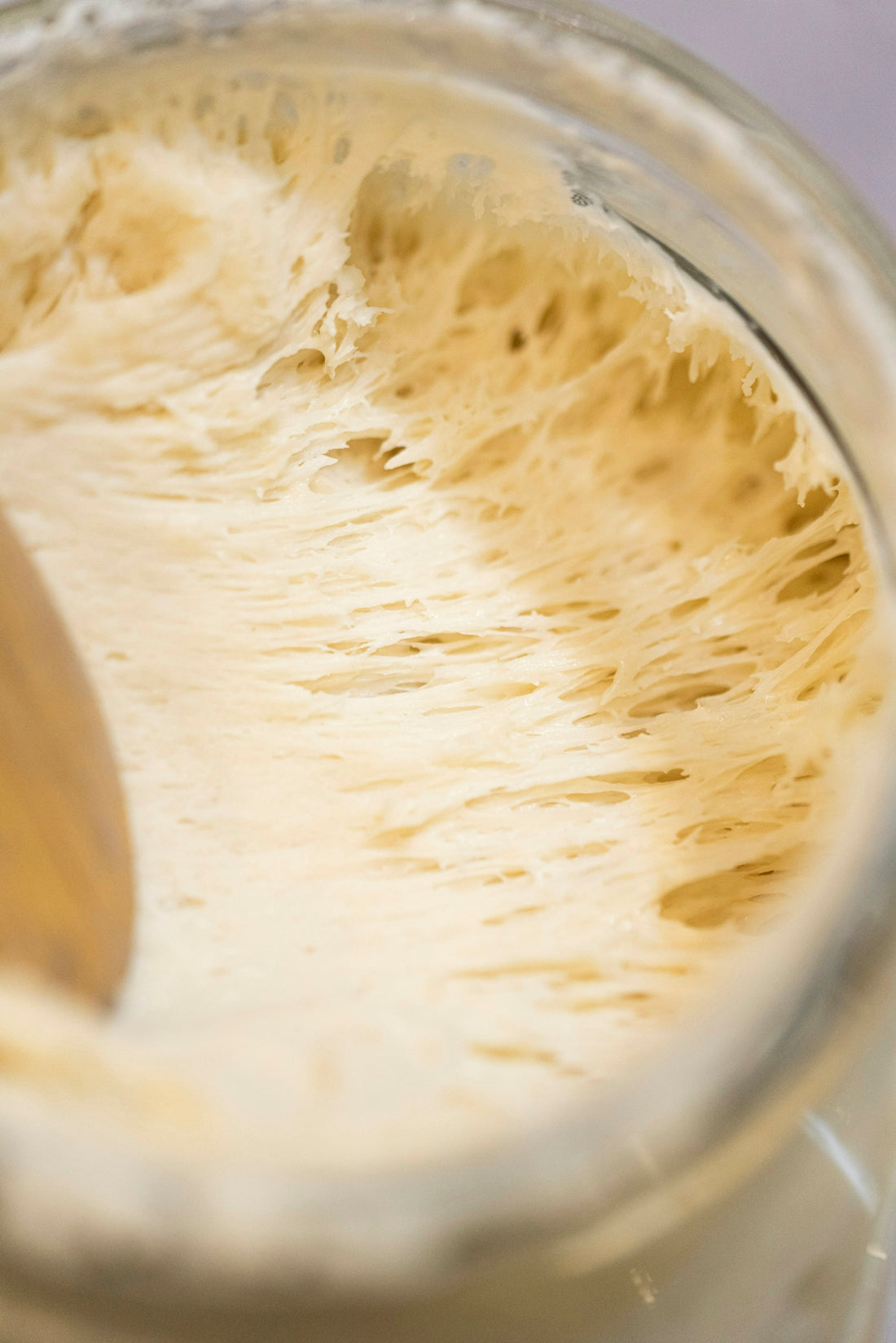
Exploring Sourdough Fermentation: A Journey with Wild Yeast
In the heart of every baker, there's a quest for perfect sourdough—a journey rich in tradition and flavor. Sourdough fermentation is an age-old process that harnesses the power of wild yeast, offering not only delicious bread but also a connection to a world of baking wisdom.
The Magic of Sourdough Fermentation
At the core of making this artisan bread is sourdough fermentation. This ancient method uses natural wild yeast and bacteria present in the environment to leaven bread. Unlike commercial yeast which is cultivated for predictability and uniformity, sourdough starter depends on the microorganisms in the flour and the air around us, creating a unique flavor profile and texture specific to your kitchen environment.
Sourdough Starter: The Beginning of Your Bakery Journey
Creating a sourdough starter is akin to adopting a pet; it requires a sourdough feeding and maintenance schedule to keep it healthy and active. A robust starter is the foundation of homemade sourdough. By mixing flour and water, you're inviting wild yeast to thrive, eventually creating a symbiotic culture that will leaven your bread.
How to Feed Your Sourdough Starter:
- Measure Equal Parts: Use the Nonna Bella 5kg Digital Kitchen Scale for precise measurements of flour and water, ideally at equal weights.
- Mix Thoroughly: Stir until smooth, ensuring all flour is hydrated.
- Discard and Refresh: Before feeding, discard a portion to avoid an overwhelmingly large starter. For convenience, the 1set Professional Baking Tools offer tools like a jar and scraper for easy maintenance.
The Fermentation Process
Sourdough fermentation is a slow process compared to using commercial yeast, but it rewards patience with complex flavors. During fermentation, the dough undergoes several changes: wild yeast causes it to rise, while lactic acid bacteria impart the bread's characteristic tang.
Why Choose Sourdough?
Sourdough vs Regular Bread is a hot topic among bread enthusiasts. Sourdough not only brings unique flavors but also potential health benefits. The slow fermentation process may make bread easier to digest and reduce blood sugar spikes, making sourdough for diabetics a more suitable option compared to regular bread.
Benefits of Sourdough Fermentation
- Nutritional Advantages: The long fermentation breaks down gluten, making it easier for some people to digest.
- Better Flavor: The extended fermentation time allows complex flavors to develop.
- Low Glycemic Index: Thanks to the acids produced, sourdough may impact blood sugar less severely.
The Legacy of a Good Starter
One might wonder if an organic sourdough starter with a historic legacy, such as the Nonna Bella Dehydrated Sourdough Starter – 10g Tuscan Heritage Culture Since the 1800s, provides a better flavor. Such starters have been cultivated for yeasts and bacteria that produce rich and unique flavors.
Crafting Your Sourdough Bread
Once your starter is active, it's time to dive into sourdough bread recipe exploration. The basic process is deceptively simple: mix, ferment, shape, and bake. However, the nuances make sourdough baking a rewarding challenge.
Baking Techniques and Tips
- How to Shape Sourdough Bread: Proper shaping ensures even crumb and rise during baking. A gentle hand and a calm patience are key.
- Best Sourdough Scoring Techniques: Scoring allows controlled expansion in the oven and adds visual flair. Experimenting with patterns can transform your loaf into a masterpiece.
- How to Get a Crispy Sourdough Crust: Baking in a preheated Dutch oven, like the 5.5 Quart Red Le Creuset Dutch Oven, traps steam, resulting in a crusty exterior.
Sourdough Bread Troubleshooting
- Dense Loaves: Often a result of under fermentation or inadequate kneading.
- Flat Bread: May stem from over-proofing or weak starter.
- Sourdough Starter Troubleshooting: If your starter isn't rising, warmth and regular feeding may revive it.
Creating with Leftovers: Sourdough Discard Recipes
Don’t waste your discard! From pancakes to pizza dough, the possibilities are endless. Using a sturdy pizza board, like the Nonna’s Wooden Pizza Board – Rustic Pine, you can craft delicious sourdough pizza dough or even sourdough bagels for a breakfast treat.
Storing Your Sourdough Starter
Understanding how to store sourdough starter is crucial for maintaining a healthy colony of microorganisms. Refrigeration slows down fermentation, allowing you to maintain the starter without frequent feeding. Remember to bring it to room temperature before using for optimal performance.
Conclusion
Sourdough baking is a journey filled with unique flavors, textures, and experiences. Whether baking a traditional loaf or getting creative with sourdough discard recipes, there's always something new to explore. Aspiring bakers and seasoned enthusiasts alike find joy in decoding the art of wild yeast fermentation.
Embark on your sourdough journey with us at Italian Sourdough, where every loaf tells a story.
